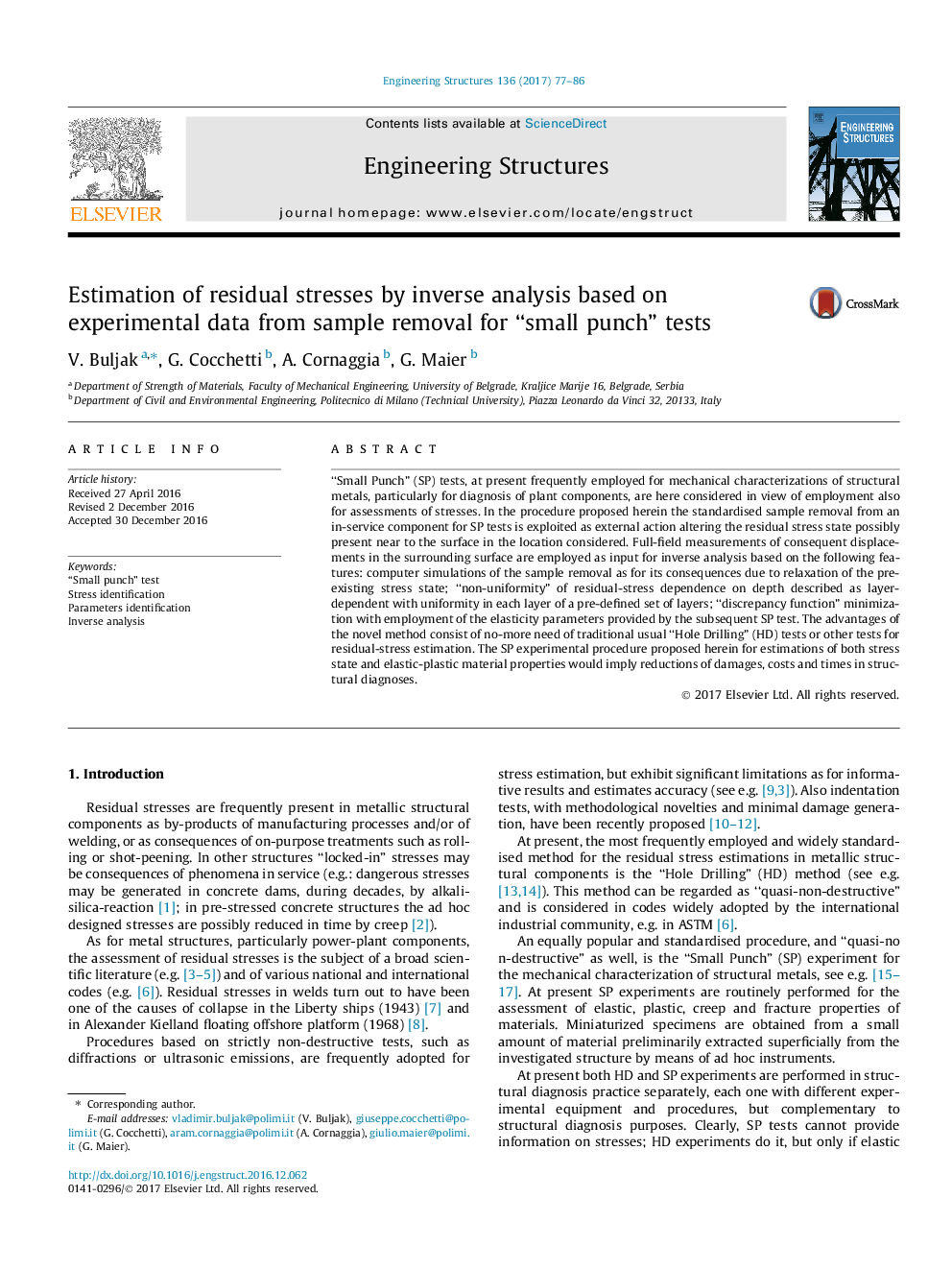| Article ID | Journal | Published Year | Pages | File Type |
|---|---|---|---|---|
| 4920486 | Engineering Structures | 2017 | 10 Pages |
Abstract
“Small Punch” (SP) tests, at present frequently employed for mechanical characterizations of structural metals, particularly for diagnosis of plant components, are here considered in view of employment also for assessments of stresses. In the procedure proposed herein the standardised sample removal from an in-service component for SP tests is exploited as external action altering the residual stress state possibly present near to the surface in the location considered. Full-field measurements of consequent displacements in the surrounding surface are employed as input for inverse analysis based on the following features: computer simulations of the sample removal as for its consequences due to relaxation of the pre-existing stress state; “non-uniformity” of residual-stress dependence on depth described as layer-dependent with uniformity in each layer of a pre-defined set of layers; “discrepancy function” minimization with employment of the elasticity parameters provided by the subsequent SP test. The advantages of the novel method consist of no-more need of traditional usual “Hole Drilling” (HD) tests or other tests for residual-stress estimation. The SP experimental procedure proposed herein for estimations of both stress state and elastic-plastic material properties would imply reductions of damages, costs and times in structural diagnoses.
Related Topics
Physical Sciences and Engineering
Earth and Planetary Sciences
Geotechnical Engineering and Engineering Geology
Authors
V. Buljak, G. Cocchetti, A. Cornaggia, G. Maier,
